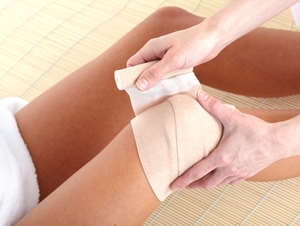 Having a well stocked first aid kit in your car is a handy item at all times, because you never know when you might need to administer immediate care for yourself or others on the road. However, a kit that doesn’t have the right essentials isn’t going to be much use, so it’s important to create yours carefully.
Having a well stocked first aid kit in your car is a handy item at all times, because you never know when you might need to administer immediate care for yourself or others on the road. However, a kit that doesn’t have the right essentials isn’t going to be much use, so it’s important to create yours carefully.
While there’s no way to be prepared for every possible type of incident, you can do your best to ensure you have all the basics. A first aid kit, along with ctp insurance, will ensure both you and other road users are covered in the event of an accident.
Here are five things you will need to store in your car’s kit.
1. Bandages
It’s best to have a variety of bandages on hand, from the stick-on Band-Aids for smaller scrapes or cuts to crepe bandages for added compression of the area. This will help to ensure you are equipped to deal with any smaller wounds that don’t require more urgent care.
Crepe bandages can be particularly handy as they also provide some support for minor strains and sprains when wrapped tightly around the area. Keep a sufficient supply in your kit, with varying sizes and shapes.
2. Dressings
Sterile gauze dressings in different sizes are another good item to keep in your first aid kit. These can help to control bleeding or protect large surface wounds such as an abrasion or graze. You can find some with their own adhesive and some without, depending on your preference.
They work well paired with bandages to cover a wound, or you can use an additional adhesive tape such as Micropore to attach them where you want.
3. Creams
A variety of creams and lotions should be part of your first aid kit. Calamine lotion can help to soothe a particularly aggressive bug bite, while aloe vera gel can also help to calm an inflamed sore patch of skin – it’s also a great one to use to take the sting out of a severe sunburn.
Hydrocortisone cream is another handy essential that can be purchased over the counter at most pharmacies. It can be used to treat a variety of skin irritations and rashes.
4. Medications
If you have a prescription for a specific medicine you may consider keeping some in your car’s first aid kit, in case you need it while you’re on the road. Make sure it doesn’t need refrigeration and always check the expiry date before taking it.
You may also want to have other over-the-counter medications on hand such as oral antihistamines and pain relievers. Antiseptic ointment is another necessary addition to the kit, to help clean the affected area.
5. Tweezers, cotton swabs, gloves
If an accident does occur and you need to treat an exposed wound, hygiene is important to prevent the risk of an infection. With that in mind, your first aid kit should contain some tools to help you treat and clean affected areas in a hygienic way.
Disposable gloves (non-latex material is recommended) are useful to ensure any dirt and grime from your hands doesn’t transfer to the wound. Tweezers and cotton swabs will also come in handy to help you place a dressing, ointment or cream exactly where you need it.
Once you have your first aid kit successfully stocked, keep it in a sturdy box or tin so the contents are safely stored in one place. Remember to check your kit regularly and top up anything that is running low or needs replacing. Pay attention to any expiry dates and throw away anything that is past it, as it may no longer be safe to consume or apply.
your opinion matters: